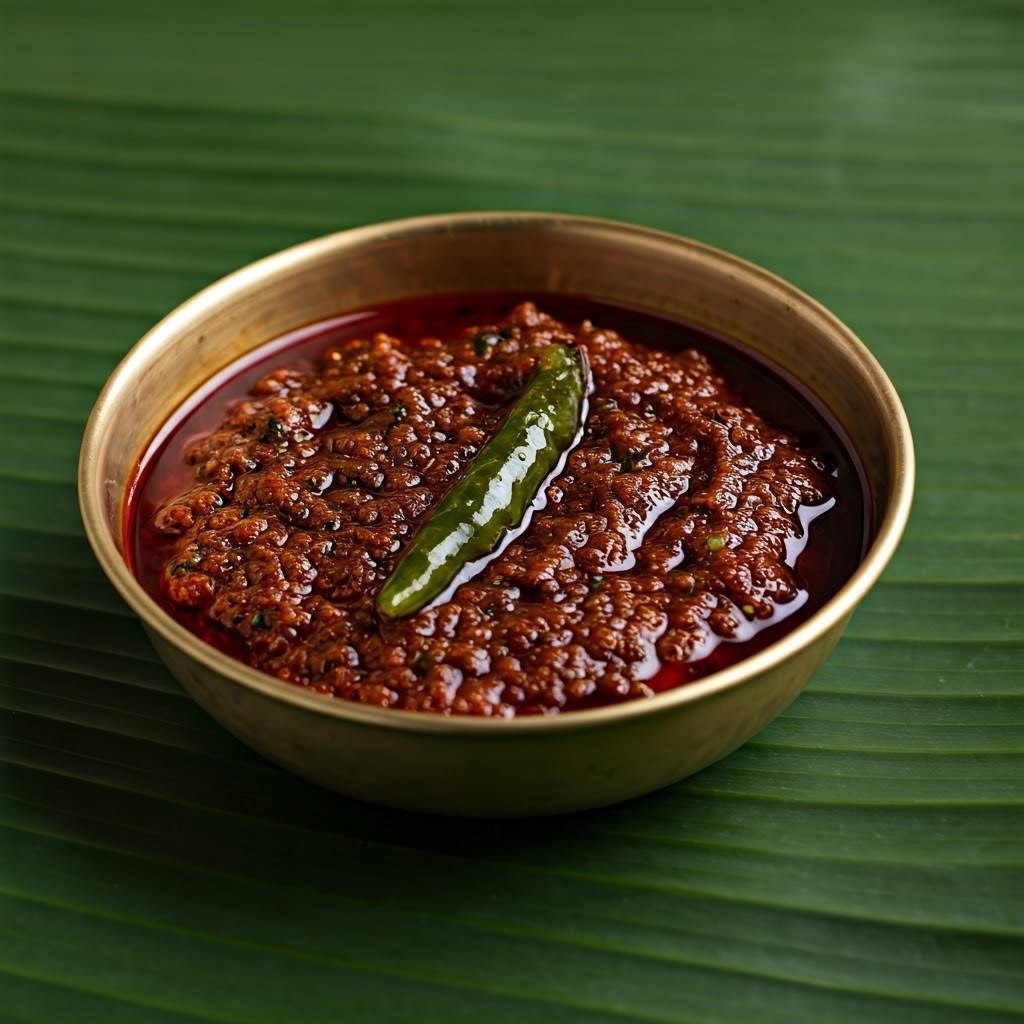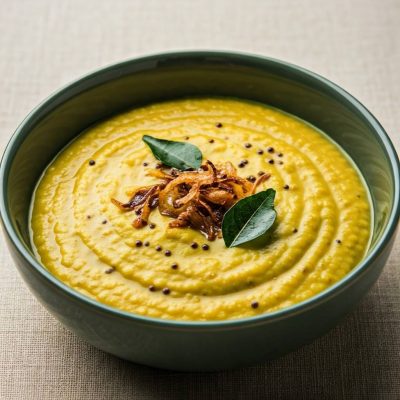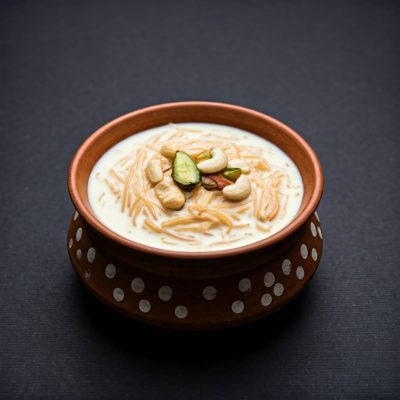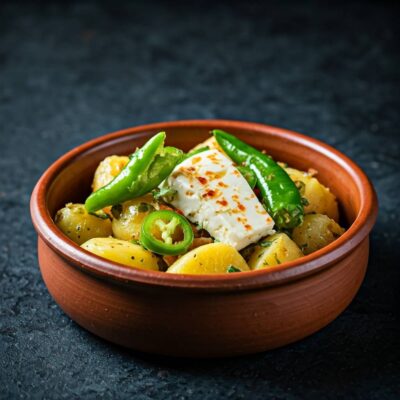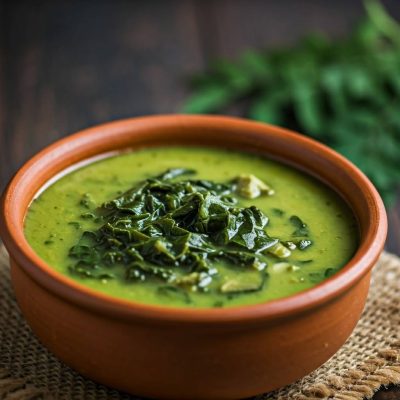Ingredients
- 1 cup, finely chopped Ginger
- 2 tbsp (or small lemon-sized tamarind, soaked in water) Tamarind paste
- 1/2 cup (adjust based on your sweetness preference) Jaggery
- 2, slit (adjust according to spice preference) Green chilies
- 1 tsp Red chili powder
- 1/4 tsp Turmeric powder
- 1 tsp Mustard seeds
- 10-12 leaves Curry leaves
- 2 tbsp Coconut oil
- Salt – to taste
Directions
Inji Puli (Puli Inji) is a traditional and flavorful Kerala side dish that perfectly balances tanginess, sweetness, and spiciness. This dish is a staple in Kerala feasts, especially during festive occasions like Onam and Vishu, and is commonly served as part of a grand Kerala sadhya (feast). It is made using fresh ginger, tamarind, jaggery, and a combination of aromatic spices that create a unique and delicious accompaniment to rice.
The key ingredient, ginger, is sautéed until it turns golden brown and tender, giving the dish a warm, earthy base. The tamarind provides a tangy, sour element, while the jaggery adds a rich sweetness to balance the flavors. The dish is seasoned with green chilies, red chili powder, and turmeric, giving it a mild heat and vibrant color.
To finish, the dish is tempered with mustard seeds, curry leaves, and more green chilies fried in coconut oil, enhancing the aroma and adding depth to the flavor profile. The result is a savory-sweet-spicy concoction that pairs wonderfully with rice, but can also complement a variety of other Kerala dishes.
Inji Puli is not only a treat for the taste buds but also provides numerous health benefits due to the presence of ginger, known for its digestive and anti-inflammatory properties. It’s the perfect balance of flavors and a true reflection of Kerala’s rich culinary traditions. Whether enjoyed with a simple meal or as part of a grand feast, Inji Puli is sure to leave a lasting impression on anyone who tries it.
Here’s an approximate nutritional breakdown for Inji Puli (per 100g serving). The values may vary based on exact ingredients and quantities used:
Nutritional Information (per 100g):
| Calories | 120-140 kcal |
| Carbohydrates | 30g |
| Sugars | 15g (from jaggery and tamarind) |
| Protein | 1g |
| Fat | 0g |
| Saturated Fat | 0g |
| Fiber | 2-3g |
| Sodium | 200-300mg |
| Potassium | 150mg |
| Vitamin A | 3% of Daily Value |
| Vitamin C | 3% of Daily Value |
| Calcium | 1% of Daily Value |
| Iron | 2% of Daily Value |
Key Benefits:
Ginger is known for its anti-inflammatory and digestive properties.
Tamarind adds a good amount of antioxidants and aids digestion.
Jaggery provides some minerals like iron and calcium compared to refined sugar.
Note: This nutritional information is an estimate and can change depending on ingredient adjustments (such as the quantity of jaggery or tamarind used).
Steps
1 Done | Prepare the TamarindIf using tamarind paste, mix it in water to get a tamarind extract. If using fresh tamarind, soak it in warm water for 10-15 minutes, then extract the pulp and strain it. |
2 Done | Cook the GingerIn a pan, heat 1 tablespoon of coconut oil. Add the chopped ginger and sauté it on medium heat for about 5-7 minutes, or until it softens and starts turning golden brown. |
3 Done | Prepare the Tamarind SauceIn another small pan, add the tamarind extract and bring it to a boil. Add salt, red chili powder, and turmeric powder. Let it cook for about 5 minutes, stirring occasionally. |
4 Done | Combine Ginger and TamarindOnce the ginger is cooked, add it to the tamarind sauce and mix well. Let it simmer on low heat for about 10-15 minutes, allowing the flavors to blend. |
5 Done | Add JaggeryAdd the jaggery and stir until it dissolves completely. Adjust sweetness by adding more jaggery if desired. Let it cook for another 5 minutes. |
6 Done | TemperingIn a small frying pan, heat the remaining coconut oil. Add mustard seeds and let them splutter. Then, add the green chilies and curry leaves, frying them for a minute until fragrant. |
7 Done | Mix the TemperingPour the tempered mustard seeds, green chilies, and curry leaves into the ginger-tamarind mixture and stir well. Cook for a couple more minutes to incorporate all the flavors. |
8 Done | Final TouchTaste and adjust salt or sweetness as needed. Once the consistency reaches a slightly thick sauce-like texture, remove from heat. |
9 Done | ServeLet the Inji Puli cool to room temperature and serve as a side dish with rice or as an accompaniment to Kerala sadhya (feast) or any meal. Enjoy your tangy, sweet, and spicy Inji Puli! Let me know if you’d like any modifications or additional details. |

